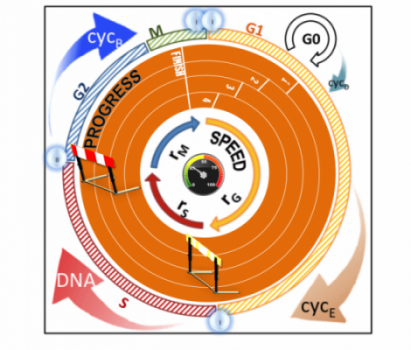Project Lead: Dr María Fuentes-Garí
Motivation & Problem Definition
Acute Myeloid Leukemia (AML) is a type of blood cancer characterised by the uncontrolled proliferation of immature myeloid cells that originate in the bone marrow (BM) and subsequently spread to the blood. Current treatment protocols, which rely on cell cycle phase-specific (CCS) chemotherapeutic drugs, utilise primarily the patient’s weight and height for the calculation of the dose. This accounts only for patient’s bodily resistance to the drug, ignoring individual cancer growth kinetics and cell cycle distribution which are key elements to CCS drug efficiency. However, their incorporation into chemotherapy planning could dramatically improve treatment outcomes by optimizing the timings and doses therefore reducing the number or intensity of the cycles needed.
What contributions have we made?
This project develops a platform comprising of a mathematical model of the cell cycle, supported by experimental data parameters and validated through independent measurements. Population balance models (PBMs) take into account not only the movement of cells between the phases but also within each of them, making them a very good choice for the detailed description of cell cycle kinetics. Thus, the mathematical model consists of a three-stage PBM representing the cell cycle phases (G0/G1, S and G2/M), each described with a biologically relevant state variable (cyclin E expression (cycE), DNA content (DNA) and cyclin B expression (cycB) respectively). Progress within the phases is captured through state variable content (cycE, DNA or cycB) and growth is reflected by the speed at which each of them is produced (rG, rS, rM), while transition is given by the rate at which the cells will jump to the next phase.
Software (María Fuentes-Garí)
- Hemocytometer Website (Covers cell counting basics, equipment, and advanced use)
- HemocyTap (Cell counting iPhone application which won second prize in the Nobuyuki Idei Award)
Text & Figure credit: Dr María Fuentes-Garí
Collaborators
- Dr David García-Münzer (Experiments & Population Balance Modeling)
- Dr Nicki Panoskaltsis (Clinical & Experimental Expertise)
- Prof Sakis Mantalaris, Dr Eirini Velliou (Experiments)
- Prof Stratos Pistikopoulos, Prof Michael Georgiadis, Dr Margaritis Kostoglou (Population Balance Modeling)

